It was one late evening jam session, my fingers tirelessly navigating the fretboard, when a profound revelation stopped me in my tracks – the power held in those two extra frets of a 24 fret guitar neck. The realization revolutionized my understanding of guitar customization and shaped my musical journey into unprecedented dimensions. These two seemingly small additions had the potential to drastically alter the guitar’s sonic character and playability, unlocking a whole new arena of creativity.
I dedicated years into researching, understanding, and experimenting with this intriguing guitar modification. I soon discovered the elusive alchemy of material, dimensions, and radius that contributes to the making of the perfect 24 fret neck. And now, I feel compelled to take you on this journey. From their unique characteristics, fret access, and sound quality, to pickup positioning and fretboard materials – let’s unveil the mystical world of the 24-fret guitar neck together. Time to strike a chord and fill the air with an enhanced melody!
Understanding 24 Fret Guitar Neck
Characteristics of 24 Fret Neck
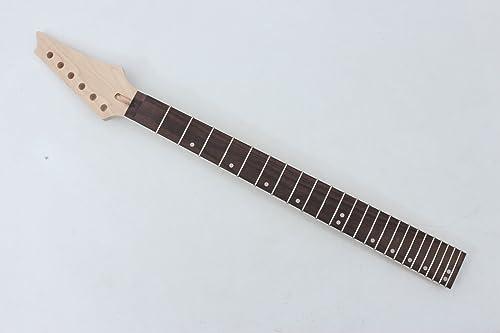
The essence of a superior guitar playing experience lies in understanding specifics like the 24-fret guitar neck. Among my most significant discoveries, the implications of a 24-fret neck on the guitar’s scale length and the neck pocket fit stand out. These characteristics speak directly to a guitar’s capacity in enhancing music, anchoring my lifelong fascination towards 24-fret necks.
Primarily, the 24-fret guitar neck provides two full octaves per string, introducing a greater range for solos and riffs. While the extension of frets increases the neck’s length, it doesn’t alter the scale length – the distance between the nut and the saddle. This means, while the upper register expands, the fret spacings and the tension remain unaffected, maintaining the guitar’s original playability.
Moreover, the neck pocket fit is key to maintaining sustain and tone quality. While this fit is of paramount importance in all guitars, in a 24-fret guitar, it needs to be flawless to support the extra neck weight and the extended range of vibrations. Hence, crafting a perfect neck pocket fit is always a remarkable luthiery accomplishment.
Delving into the characteristics of 24-fret necks was instrumental for me as a luthier and performer, altering my interaction with guitars. This newfound knowledge allowed me to appreciate the skill, creativity, and precision that luthiers invest to craft these complex instruments. By sharing my insights, I hope you too will be inspired to explore the potentials that a 24-fret guitar neck has to offer.
The Fretboard Extension
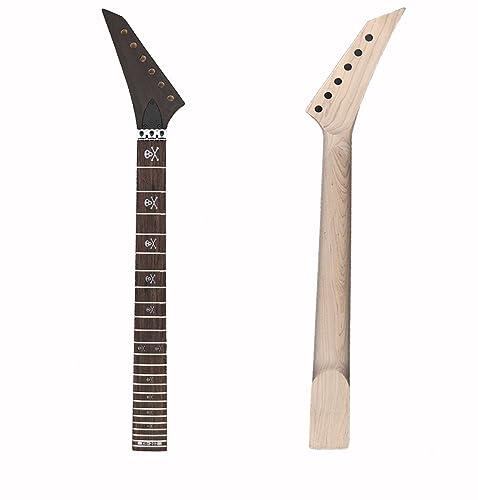
Moving along in our journey of understanding the 24 fret guitar neck, we now turn our attention to an often overlooked, but significantly impactful feature: the fretboard extension. In my early days as a luthier, I stumbled upon the subtle yet considerable changes this extension can bring. I believe it’s critical for guitarists to recognize and appreciate this feature, hence my motivation to illuminate its relevance.
A fretboard extension is exactly as it sounds – an extension of the fretboard beyond our standard 12, 15, or even 24 frets. While it may not drastically alter the basic functions of your guitar, it does unlock unexplored realms of notes, broadening the range and versatility of the instrument. Essentials we will unpack as we delve into focusing on the impacts on sound and performance later in this discussion.
Adding more frets allows guitarists to play higher notes that couldn’t be achieved on a traditional 12 or 15 fret guitar neck. This can be distinguished particularly in genres that demand high notes and extended solos, like jazz and progressive metal. Interestingly, the extension also subtly impacts the tonal color of the instrument, as a result of slightly shifting the position of neck pickup which we will explore further in, ‘Pickup Positioning’.
In my experience, this feature gives a nuanced character to your instrument while extending its utility in a musical setup. However, integrating it requires careful consideration of customization and compatibility options, a topic we will navigate further in this discourse. To conclude, expanding your understanding of the fretboard extension will inevitably lead to a deeper mastery of the artistry and mechanics of the 24 fret guitar neck.
The Impact on Guitar Performance
Fret Access and Sound Quality

The magic of high fret access on a 24-fret guitar neck offers an undeniable allure. My first encounter with this design opened up a novel realm of notes, adding depth to my performances. Yet, the charm extends beyond the extra notes; with broader access comes an intriguing shift in sound quality.
Fret access essentially governs the range of notes you can play, but the transformation in the timbre is a game changer. Playing the 24th fret on the low ‘E’ string, I found a noticeable change in the tonal character – a warmer, rounder sound that could add a dramatic effect in certain pieces. These shifts effortlessly gave my performance an enriched dynamism.
As I further experimented, I discovered how essential easy access to the high frets was, particularly in certain genres where shredding and soloing is central. It was not just about being able to ‘reach’ those extra notes; it was a question of how comfortably I could do so.
In retrospect, the 24-fret design offered more than just additional notes. The blend of the high fret access and deviations in sound quality introduced a new dimension to my guitar playing—an edge that amplified every performance.
Pickup Positioning
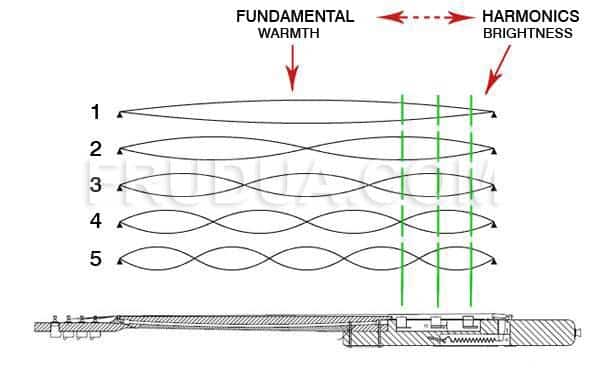
Upon moving into the section entitled ‘Pickup Positioning’, I draw on my rich history of guitar craftsmanship. Over the years, I’ve learnt that the precise neck pickup position offers high flexibility in achieving different tonal characteristics. This knowledge has phenomenally influenced the way I approach guitar making of 24 fret guitar necks.
Adjusting the position of the pickups in relation to the 24th fret can remarkably manipulate the guitar’s overall tone. Moving the pickup closer to the bridge can produce a brighter, sharper sound. In contrast, positioning it closer to the neck allows for a smoother, bass-fuelled tone. This underscores the intricate correlation between pickup placement and tonal effect, thus molding the guitar’s performance.
The neck pickup position contributes immensely to the guitar’s sound spectrum. It makes dense and warm sounds more distinct, further enriching the tonal palette of a 24 fret guitar neck. The neck pickup position adds a layer of complexity to the guitar’s sound that further resonates with the player’s intent, employing a unique storytelling medium.
Effectively, pickup positioning creates an immersive experience of testing, customizing, and discovering new music avenues. It combines the technical aspects of guitar building with the emotional journey of capturing the perfect sound. Undeniably, pickup positioning’s contribution is paramount to the overall impact of guitar performance.
Customization and Compatibility Options
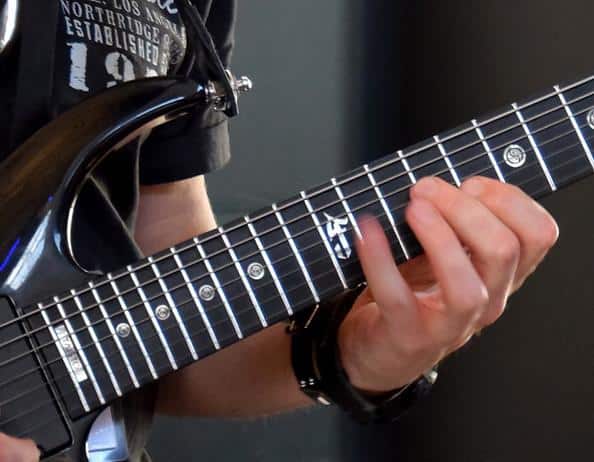
As we delve further into the world of the 24 fret guitar neck, let’s take a moment to address an aspect that often goes overlooked by many enthusiasts: customization and compatibility options. Just as you would tailor a suit to fit your body, your guitar neck must also be moulded to your personal style, feel, and playability preference. And it’s here that my experience in lutherie sheds light on the intricate details of this process.
Over the course of my career, I’ve been driven by a spirit of innovation with countless custom projects under my belt. So, interested in customizing your guitar neck? Be prepared to learn the ins and outs of achieving the perfect guitar neck replacement. This is a game of specificity, and as we venture further, I’ll be sharing with you some salient points to consider in your odyssey to tailor your guitar.
One key aspect is compatibility. Fitting a new neck onto your guitar may not be as simple as it sounds. Guitar neck compatibility involves a number of factors including the heel size, pocket dimensions, scale length, and type of joint among others. Whether you’re opting for an electric guitar neck replacement or an acoustic one, every tiny detail counts to ensure seamless integration.
Custom guitar necks offer you choices beyond the ordinary. You can have an extended range, choose from different materials such as rosewood, ebony or maple, left-handed options, varying fret sizes, and much more. The ongoing trend is towards even larger and more complex guitar necks, but always remember, your choice should complement your playing technique.
In my journey as a luthier, countless hours had been spent experimenting with different styles, shapes, and sizes, pushing the boundaries of traditional design and innovating for distinctive sounds. I’m a staunch believer that a niche exists for every type of player, and customizing your guitar neck is an essential aspect of refining your unique sound signature.
To wrap up, the 24-fret guitar neck beholds a realm of customization and compatibility options, catering to the most specific of demands. It indeed spirals you into a rabbit hole of options. Yet, it’s this journey that often leads guitarists to their perfect instrument, an extension of their artistic expression, their voice. And as your guide on this quest, my expertise, acquired over years of dedication to the craft, steers you through the checkpoints to your perfect guitar neck.
As we move ahead, we’ll delve into the choice between 6-string and 7-string guitar necks, materials, specs, and much more. Stay tuned as we continue to uncover the fascinating world of 24-fret guitar necks.
Choosing between 6-string and 7-string Guitar Necks
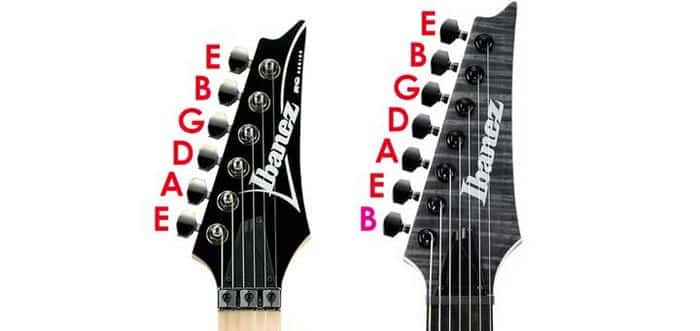
As we continue to delve deeper into the world of guitar necks, one frequently posited question surfaces: “Should I opt for a 6-string or a 7-string guitar neck?” Over years, I’ve had the privilege of working with both 6-string and 7-string guitars. I hope to provide you all with balanced and experienced insights to help you make the best choice for your musical journey.
6-string or 7-string guitar necks – an upgrade or just a different flavor? Let’s debunk some myths and peek into their uniqueness. Your choice heavily leans upon your personal aspirations, music genres, and playing techniques.
The 6-string guitar neck, the most ubiquitous of all, is the golden standard. Tailoring a wide genre variety from rock, country, blues to jazz, its versatility can be surprising. From beginners to seasoned professionals, the 6-string guitar neck has an appeal that is indubitable. Every chord, every note is easily within your grasp, making it an excellent choice for those seeking fluidity in their performances.
But, if you want to push boundaries, broaden your tonal horizon, and discover unchartered territories of soundscape, welcome to the 7-string guitar neck club. Extra string add versatility, expand the guitar’s range, and enhance playing creativity, allowing for increased chording, improved soloing, and inventive rhythm possibilities. Interestingly, it raises the bar for a challenging, adventurous musical journey. It might take a wee bit longer to master, but believe me, the journey is worth it.
Remember, it’s not just about the number of strings. A guitar should complement and augment your music expression. It should be an extension of yourself, reflecting your unique musical persona. Moving beyond traditional conventions, the debate between the 6-string and the 7-string guitar neck is largely subjective. Embrace the guitar that sings your tune with the most authenticity.
Plethora of options out there makes decision-making a tad overwhelming. Don’t let the crowd sway you, go for one that suits your aspirations and skills.
As we transition into the specifics of materials and specs in the later chapters, I encourage you to mull over the invaluable role of the guitar neck in your musical sojourn. It has the power to significantly mold your sound and playing style. Whether it’s a 6-string or a 7-string guitar neck, the choice is fundamentally yours. My word of advice? Choose wisely, practice passionately, and the fretboard, however many strings it may host, will idolize your fingertips.
Materials and Specs of 24 Fret Guitar Neck
Fretboard Materials
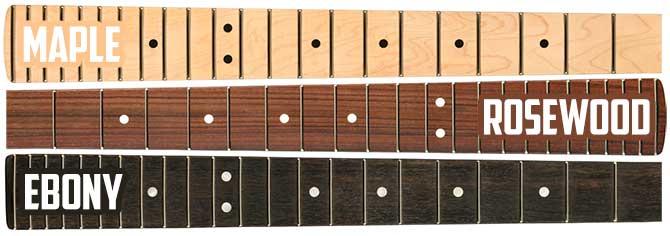
Having explored the world of 24-fret guitar necks and their characteristics, it’s essential to delve into the specificity of fretboard materials, a major factor in neck structure. Understanding different fretboard wood types is vital, as each offers unique sound qualities and aesthetic appeal.
In my journey as a guitar maker, I’ve worked with a variety of materials, each delivering yet another flavor to the music. One classic choice is the rosewood fretboard. Known for its warm tones, it is the go-to for many due to its smooth feel and engaging grain patterns.
Another popular choice is the maple guitar neck. Its bright tonal quality, often introducing clarity and sustain in sound, is its defining strength. Its dense structure also contributes to its durability, making maple one of the high-recommendations for fret-makers.
From the bass-heavy mahogany to the resonant ebony, each wood imbues its distinct tone, contributing to the final timbre of your guitar.
Remember, the right fretboard material enhances the player’s comfort, influences the instrument’s resonance and sustain, and ultimately, improves the overall playing experience. Exploring different fretboard materials, thus, is an encompassing journey that complements every guitar enthusiast’s musical voyage.
Up next, we’ll discuss neck dimensions and radius, another crucial factor in your guitar’s performance and sound quality. However, let’s not forget, every piece of the guitar, including the fretboard, needs a tailored approach to truly sing your tune.
Neck Dimensions and Radius

In my continuous journey to understand the intricate details of guitar making, I’ve poured countless hours into studying one of the most overlooked aspects – the neck dimensions and radius. This may seem inconsequential, but let me assure you, the implications of these parameters on the sound output of a 24-fret guitar neck are profound.
When it comes to the radius of the guitar neck, it directly affects the guitarist’s playstyle and the instrument’s action. A smaller radius lends itself to chord playing since the strings lie in a more curved fashion. Conversely, a larger radius facilitates faster play and easier string bending, usually favored by soloists. This subtle curvature variance shapes the way your fingers interact with the fretboard, thus influencing your performance style.
Meanwhile, understanding guitar neck dimensions also carries significant weight. The width and thickness of the neck play vital roles in the player’s comfort and guitar’s resonation. For instance, thinner necks are easier to grip and allow quicker successive note play, while thicker necks generate a richer, more resonant sound.
In essence, your choice of neck dimensions and radius remarkably contributes to the overall tonal output and playability of your guitar. Therefore, it’s paramount to familiarize yourself with these specs, keeping them in mind as you embark on your journey to customizing or choosing the perfect 24 fret guitar neck.
Professional Advice and Tips

As we delve deeper into the complexities of the 24-fret neck design, one may wonder how to navigate the maze of technical details, design features, and performance impacts. Looking for insider tips and professional advice on mastering 24-fret guitar necks? Stay tuned for some major revelations! Throughout my career as a luthier, I’ve accumulated significant insights that can help you optimize the benefits of a 24-fret neck design.
First off, a significant factor in mastering a 24-fret neck is understanding the importance of nut width adjustments. By experimenting with nut width, you can significantly alter how the instrument feels in your hand. Some prefer a wider nut for comfort, while others may find a narrower nut facilitates faster, easier playing. In my personal luthier journey, I found that the smallest changes in the nut width could result in profoundly different playing experiences. It’s all about finding that perfect balance that suits your playing style.
The same goes for the guitar neck profiles. Discovering the perfect neck profile is crucial in achieving ease of playability and comfort. Take, for example, the “C” shape—known for its comfort—or the “U” and “V” shapes, preferred by those desiring a more vintage feel. Careful attention to the neck’s profile can drastically alter your interaction with the guitar, affecting everything from chord progressions to intricate solos.
Here’s an insider tip: whenever you’re evaluating neck profiles or experimenting with nut width adjustments, it’s critical to remember there isn’t a ‘one size fits all’ model. Individual preferences play a significant role. As a luthier, my role often shifted from a designer to an empathetic listener, understanding the guitarist’s unique needs, and delivering a customized instrument that matched their vision.
Part of the allure of being a guitarist and a luthier is the ability to use such intricacies to your advantage—it presents an opportunity to create something truly personal and distinctive. So, while understanding the basic specifications and features is vital, innovation and personal preference hold equal weight.
Whether you’re a seasoned luthier, an avid guitarist, or a novice starting your journey, my professional advice would be to continually explore, experiment, and evolve. A 24-fret guitar neck opens avenues for exploration—you can play with pickup positions, mix-and-match materials, even dabble in advanced techniques like shred guitar or sweep picking. So go forth, brave the unknown, and you may discover a sound that’s uniquely yours.
FAQs
What is a 24 fret guitar neck?
How does the 24 fret design impact the guitar’s sound?
Can you customize a 24 fret guitar neck?
Are there any disadvantages to a 24 fret guitar neck?
Conclusion
To summarize, the 24 fret guitar neck offers a higher pitch range and elevated customization, significantly impacting sound output. Understanding the impact of its design, materials, fretboard extension, and customization enables us to make informed decisions regarding electric guitar neck replacement. Proper choice and installation of a 24 fret neck not only enhance guitar performance but also influence the overall sound quality.
Moving the pickup position can affect the tonal output, and choosing between 6-string and 7-string necks provide different playing experiences. Considering the neck dimensions, radius, and fretboard materials further influence your final decision.
So, how will the understanding of a 24 fret guitar neck influence your next guitar choice? Apply your newfound knowledge and bring the magic of music into play.
Looking back on my journey, it’s fascinating to reflect on the evolution of guitar design over the years. It’s been a pleasure to guide you through this dynamic world of 24-fret guitar necks.
Overall, learning about the 24-fret guitar neck design empowers you to enhance your musical prowess and bring meaning to every note struck, creating a unique melodic experience.